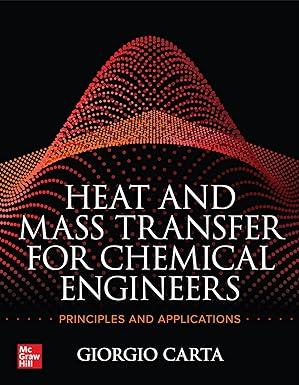A cylinder of a radioactive solid, 1.5 cm in radius and 2 m long, is encased in
Question:
A cylinder of a radioactive solid, 1.5 cm in radius and 2 m long, is encased in a cylindrical shell of pyrex glass, 3.0 cm in outside radius. The radioactive core generates heat at the steady rate of 400 W. The cylindrical assembly is suspended in air at 27°C, which flows crosswise at a speed of 1.0 m/s. The thermal conductivity of the radioactive solid is very high, so that the temperature in the radioactive core is uniform. Assuming steady state:
(a) Make a sketch of the temperature profiles for this problem. (b)
Write the equation(s) and boundary conditions needed to describe steadystate heat transfer from the radioactive core to the flowing nitrogen. (c)
Solve your equation(s) to find an explicit expression for the heat transfer rate (W) from the radioactive core to the flowing nitrogen as a function of the overall ΔT.
(d) Estimate the external convective heat transfer coefficient.
(e) Determine the temperature of the radioactive core for the conditions described above.
(f) Determine the temperature of the outer surface of the glass shell for the conditions described above. (g) Determine what the thermal conductivity of the glass shell material would have to be if it were desired to limit the difference between the temperature of the radioactive core and that of the outer surface of the glass shell to 10°C assuming that all other conditions stay the same.
Step by Step Answer:

Heat And Mass Transfer For Chemical Engineers Principles And Applications
ISBN: 9781264266678
1st Edition
Authors: Giorgio Carta





